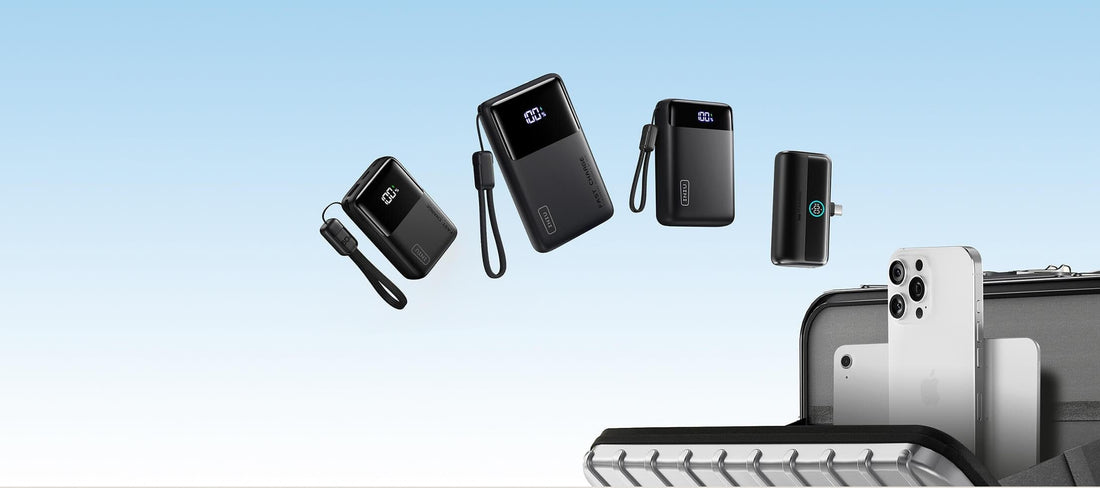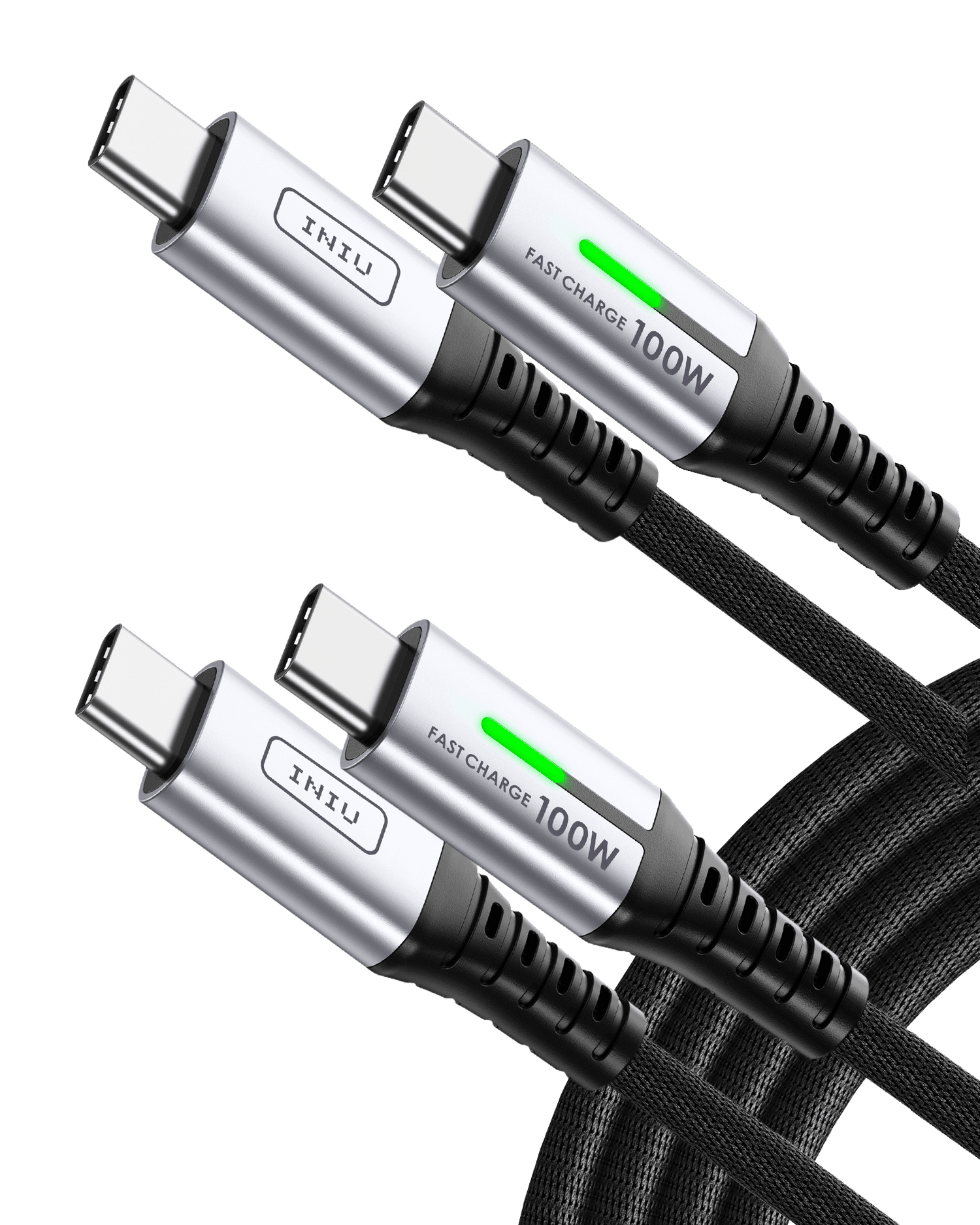
Traveling with Power Banks: Rules, Flights & Best Practices
Traveling often means staying connected, especially with our phones, tablets, and laptops. But these devices can run out of battery quickly. That's where power banks come in. A small portable power bank can keep you powered up on the go.
Why Power Banks Are Non-Negotiable Travel Gear
Imagine being on a long flight or a road trip with a dying phone. Without a power bank, staying connected could be difficult.
- A power bank gives you the freedom to keep your devices charged, no matter where you are.
- If you’re flying, keeping your phone or tablet charged is easier with a portable power bank.
- Having a backup power source can ease the stress of relying on public chargers, which may not always be available.
- Portable power banks are compact and lightweight, making them perfect travel companions.
- You can use a power bank to charge phones, cameras, laptops, and other essential devices during your journey.
Can You Take a Power Bank on a Plane?

Yes , you can bring a power bank on a plane, but there are rules to follow:
- Power banks must be placed in your carry-on bag , not in checked luggage.
- If you have extra power banks or spare batteries, they must also be kept in your carry-on.
- The terminals of your power bank should be protected to avoid short circuits . You can use tape, a case, or a plastic bag to cover the terminals.
- Most airlines allow power banks up to 100 watt-hours (Wh) . For larger batteries (101–160 Wh), you need the airline's approval.
- You can usually carry two spare power banks of up to 160 Wh, but they must be for personal use only .
Why Is There a 100 watt-hours (Wh) Limit?
Here’s why the limit exists:
- Safety : Lithium batteries, like the ones used in power banks, can catch fire or overheat . Keeping the size below 100 Wh reduces the risk of a dangerous situation.
- Smaller energy output : A 100 Wh battery has enough power for personal devices but is small enough to be safely managed in an emergency.
- Standard limit : This is a universally recognized standard. It ensures a balance between practicality (keeping your devices powered) and safety.
- Easy to follow : The 100 Wh rule helps passengers and airlines manage the batteries consistently. Without such rules, it could be hard to decide which batteries are safe to bring. To check if your battery meets the rule, you can use this simple formula: Watt-hours (Wh) = Voltage (V) × Capacity (Ah).
Best Practices for Traveling with Power Banks
To get the most out of your power bank and stay safe while traveling, follow these best practices:
- Avoid cheap or unbranded power banks . Certified models follow strict safety standards. Poor-quality units are more likely to overheat or fail.
- If your power bank doesn't show the Wh rating, write it clearly on a tag or sticker . Security checks may delay your trip if officers cannot verify the battery size.
- Charging from unstable car or train power outlets can harm the power bank's internal battery . Wait until you're at a stable power source, like a hotel or airport lounge.
- Packing multiple power banks on top of each other can trap heat. Always separate them with fabric or a pouch to avoid temperature buildup.
- A swollen or discolored power bank could mean internal damage . Don’t bring it on a trip. Dispose of it safely before you go.
- Store your power bank under the seat in front of you . If a problem occurs, it's easier to act fast when it's within reach—not locked away overhead.
Choosing the Best Power Bank for Travel
When you’re traveling, the last thing you want is to drag around bulky chargers or worry about your phone dying mid-journey. Whether you’re hopping on a plane, exploring a new city, or camping off the grid, a small power bank is your best friend. But not just any charger will do; you need something reliable, lightweight, and fast. Selecting the right portable power bank is essential for hassle-free travel.
Check out two top choices that meet the mark as the best power banks for travel , whether you're packing light or preparing for a longer adventure.
INIU Carry P50-E1 – Ultra-Small Size, Full-Speed Charging

If you want the smallest power bank that can still handle big jobs, the INIU Carry P50-E1 is a standout.
- Tiny but Powerful : Thanks to its TinyCell Pro battery, it’s 3.3*2.0*1.0in, 45% smaller than most 10,000mAh chargers. It easily fits in your pocket or carry-on without taking up space.
- Laptop-Friendly Output : Delivers up to 45W of power, enough to charge a MacBook Air—something few mini chargers can do.
- Fast Phone Charging : Fully supports PD, QC, and Samsung Super Fast Charging. Perfect for keeping your iPhone 16 or Galaxy S24 ready without waiting around.
- Built for Convenience : Comes with a removable USB-C to USB-C cable that doubles as a lanyard, great for on-the-go travelers.
If you’re packing light and need serious charging in a tiny body, this is one of the best power banks for travel you can find.
INIU Carry P51-E2 – High Capacity Meets Travel-Friendly Size
Planning a longer trip or bringing multiple devices? The INIU Carry P51-E2 gives you mega power in a pocket-sized package.
- Compact 20,000mAh Capacity : It’s the market’s smallest 20,000mAh power bank , measuring just 1.94" diagonally. Easily fits into a jacket pocket or small sling bag.
- Charges More, Worries Less : Provides about 4 full charges for iPhone 16 and 3 for Galaxy S23—ideal for sightseeing days or multi-day road trips.
- Fast 22.5W Charging : Delivers up to 75% charge for Samsung S23 in just 25 minutes. No more hovering around outlets at the airport.
- Multiple Ports : With 2 USB-C and 1 USB-A, it powers everything from phones to GPS units and even portable fans or lights.
- Travel-Approved : TSA-friendly and carry-on safe, making it a must-have for flights.
For anyone who travels with a phone, tablet, and other gadgets, this charger strikes the perfect balance between power and portability.
FAQs about Traveling with Power Banks
Q1. What happens if my power bank gets flagged during airport security?
A : If a security officer cannot confirm the battery's capacity or safety, they may ask you to remove it from your bag . You could be told to leave it behind if the power bank looks damaged or has no clear labeling. To avoid problems, always travel with a clearly labeled power bank that shows voltage (V) and capacity (mAh or Ah) . This helps confirm it’s under the 100 Wh limit. Keep your power bank in your carry-on luggage—not checked baggage—and avoid bringing units that are cracked or worn. Using a brand-name model also helps reduce suspicion.
Q2. Can I use a power bank during the flight?
A: Yes , you can use your power bank during the flight as long as the airline does not restrict it. However, only use it to charge small devices like phones or tablets. Avoid charging large laptops or other high-power items during takeoff and landing.
Q3. Are solar power banks safe to fly with?
A: Yes , but only if the battery inside meets the same rules as other lithium-ion power banks (under 100 Wh).
Q4. Is it okay to pack power banks in hotel luggage storage or lockers?
A: Yes , but only if the area is cool and dry. Avoid storing power banks in locked cars, outdoor lockers, or warm places like behind windows, especially in summer. Heat can damage the internal battery and lower performance permanently.
Q5. Can I bring a MagSafe power bank on a plane?
A : A MagSafe power bank is a charger that sticks to the back of some iPhones using magnets. It charges the phone wirelessly. Yes, you can take it on a plane as long as it follows the battery rules. Keep it in your carry-on bag and check that the battery is under 100 Wh.
Q6. How do I know which is the best power bank for travel?
A : The best power bank for travel should be small, light, and fast . Look for one that fits in your bag or pocket, charges your device quickly, and works with your cables. Also, check that it shows the battery size (Wh) and is approved for air travel.
Q7. What makes a power bank good for travel use?
A : A good travel power bank charges more than one device, works with phones and tablets, and doesn't overheat. It should have strong ports (like USB-C), not be too heavy, and meet airline rules. A travel power bank should also be easy to recharge during your trip.



